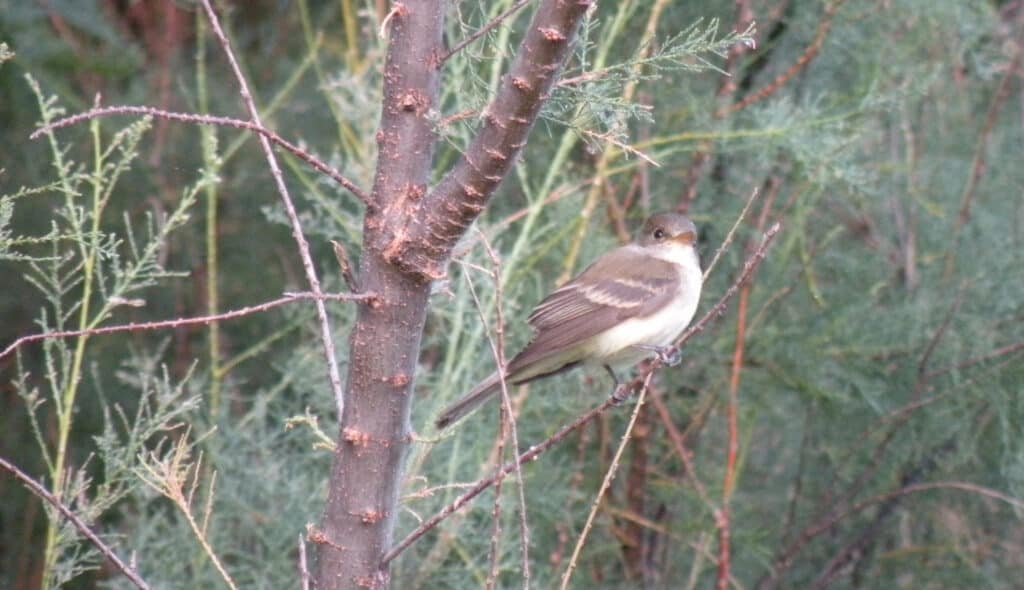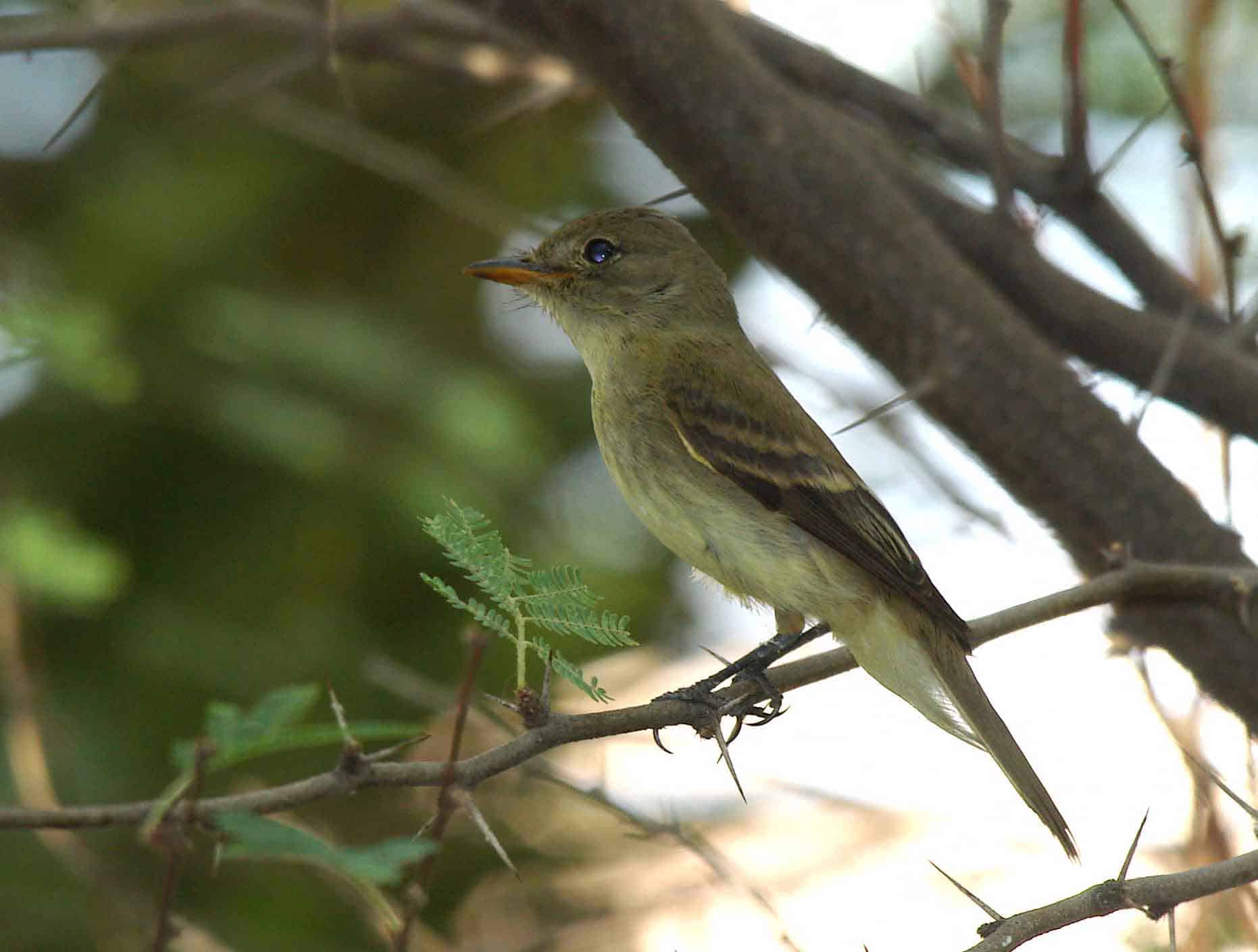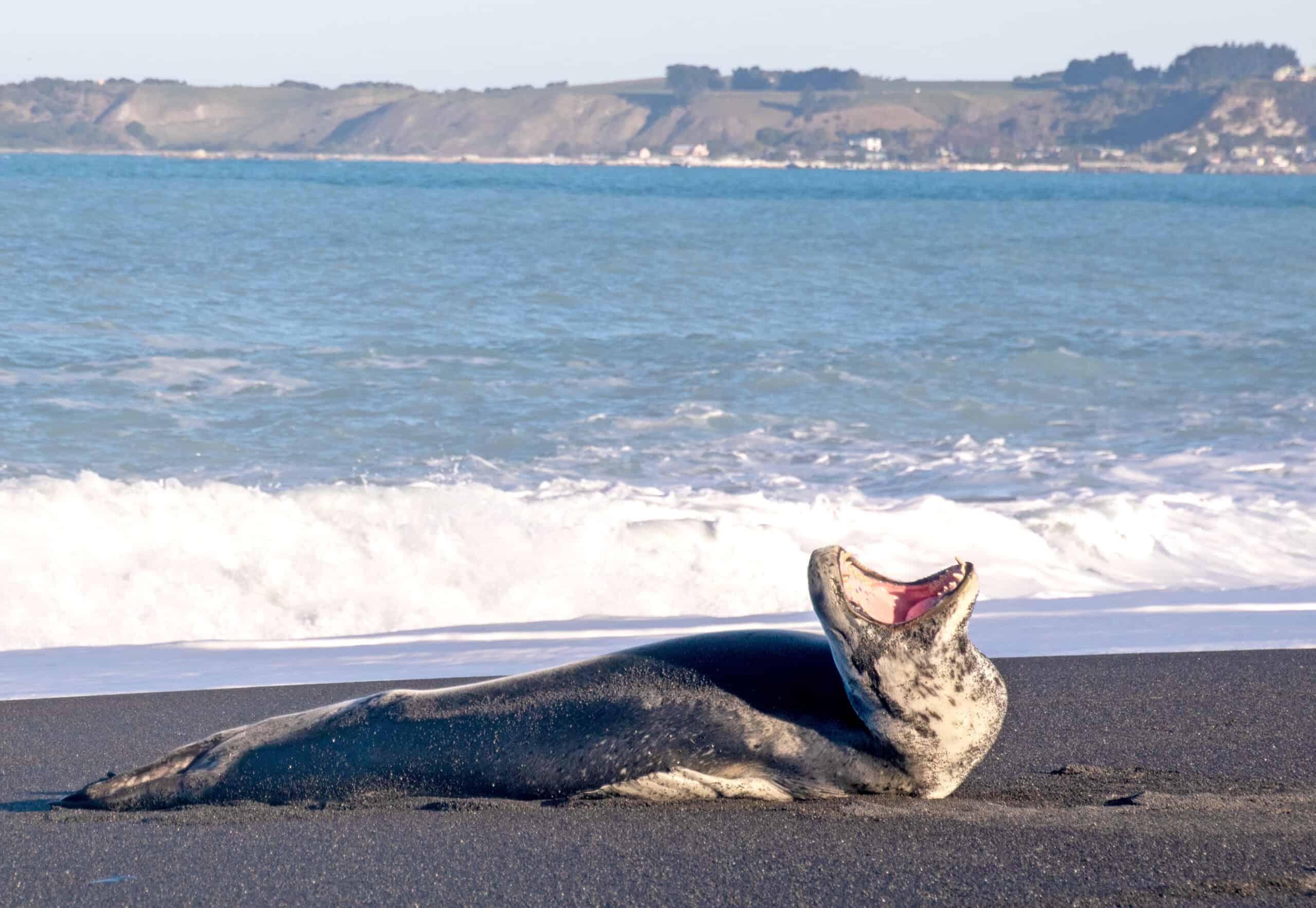Share this article
Wildlife Featured in this article
- Southwestern willow flycatcher
This endangered bird is evolving to adapt to climate change
Over the past century, the southwestern willow flycatcher’s genome has changed
We usually think of evolution as taking place over eons, but researchers found that some endangered birds in California have evolved in just the past century in response to climate change.
In what they call “one of the few studies to document climate adaptation in a wild population,” biologists looking at the genomes of southwestern willow flycatchers in San Diego found the birds have developed adaptations to deal with wetter, more humid conditions over a matter of decades.
“Our understanding of the pace at which evolution can occur has changed quite a bit,” said Sheela Turbek, a postdoctoral researcher at Colorado State University and lead author on the study published recently in Nature Climate Change. “Traditionally we think of evolution happening over millions of years, but research is showing it can be documented at a much more rapid pace.”
The southwestern willow flycatcher (Empidonax traillii extimus) is a migratory bird that breeds in the American Southwest, from southern Colorado to the deserts of California. Federally listed as endangered since 1995 largely due to habitat loss, it is one of four subspecies of willow flycatcher.
Throughout most of its range, the southwestern subspecies is experiencing hotter, drier conditions due to climate change. But Turbek’s team focused on birds around San Diego, where the climate is becoming wetter and more humid. They found that the birds’ genetic code has changed since the late 1800s in sections of the genome associated with humidity and precipitation.
“Traditionally we think of evolution happening over millions of years, but research is showing it can be documented at a much more rapid pace.”
Sheela Turbek, postdoctoral researcher at Colorado State University
Recent research has found that many bird species’ body sizes are decreasing due to climate change, including many migratory songbirds. But physical changes may be due to environmental conditions rather than heritable traits, Turbek said. Her study looked at the genetic level. While it’s not clear what physical attributes the genetic changes might cause—the birds aren’t visibly different—nearby genes in the genetic code seem to be related to temperature regulation.
Turbek conducted the work as part of Kristen Ruegg’s lab at CSU. Ruegg’s past work focused on how willow flycatchers had adapted to climate conditions across space. The latest study focused on how they have adapted over time.
“A lot of recent research has centered on predicting species’ responses to future climate change,” Turbek said. “These methods rely on patterns observed over space, future climate projections, and the assumption that genetic changes will occur in response to shifting climate conditions in order to identify vulnerable populations. However, few studies have attempted to validate that assumption.”

Using specimens at the Berkeley Museum of Vertebrate Zoology, the California Academy of Sciences, and the Natural History Museum of Los Angeles County, Turbek’s team was able to gather historical genetic material from southwestern willow flycatchers collected between 1888 and 1909, sequence the genomes and compare what they found to recent samples.
The research was only possible due to recent advances in genomics, Turbek said. DNA can be hard to extract from old specimens and degrades over time. Since museums usually provide only a tiny sample—maybe just a piece of a toe pad—there’s often not much to work with.
“Luckily technology has advanced quite a bit over the last 10 years,” she said.
Her team’s findings showed not only that the birds’ genome had changed over the century to adapt to the changing climate, but that the flycatchers interbred with other populations—possibly birds that came to San Diego from the Pacific Northwest or desert Southwest due to habitat loss in their home ranges.
That swapping of DNA may have been important in the birds’ ability to adapt to climate change so quickly, Turbek said. “Populations with more genetic diversity are thought to be healthier and better able to cope with changing environmental conditions.”
It may also point to strategies conservationists can use to help species adapt as the climate continues to change. While it can be a controversial notion, some conservationists look to assisted gene flow as a tactic to help wildlife adapt to changing conditions. “Our findings suggest that this could be a viable conservation strategy going forward,” she said.
While the study provides some hope for the future of the southwestern willow flycatcher, Turbek said, the birds continue to decline, largely due to habitat loss.
“This population is still very much in danger,” she said. “Unfortunately, climate change isn’t the only human-induced threat they’re dealing with.”
Header Image: The southwestern willow flycatcher's genetics have evolved over the past century amid a changing climate. Credit: Jim Rorabaugh/USFWS








